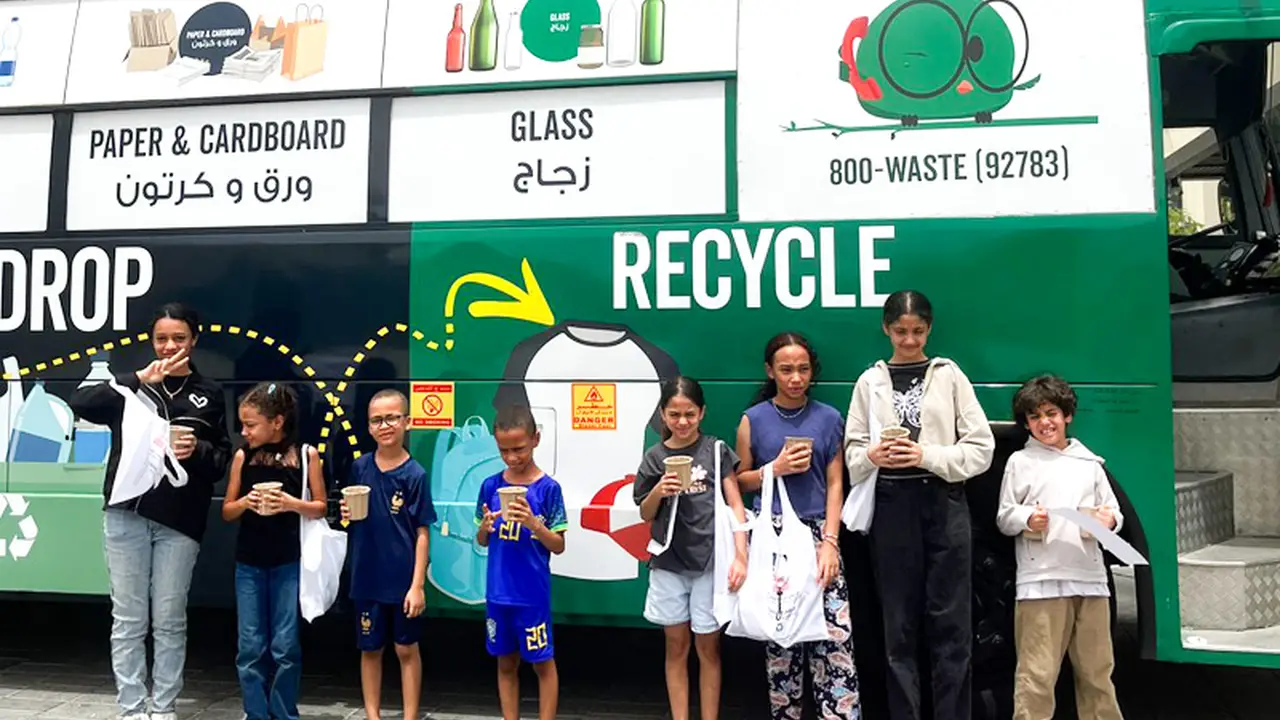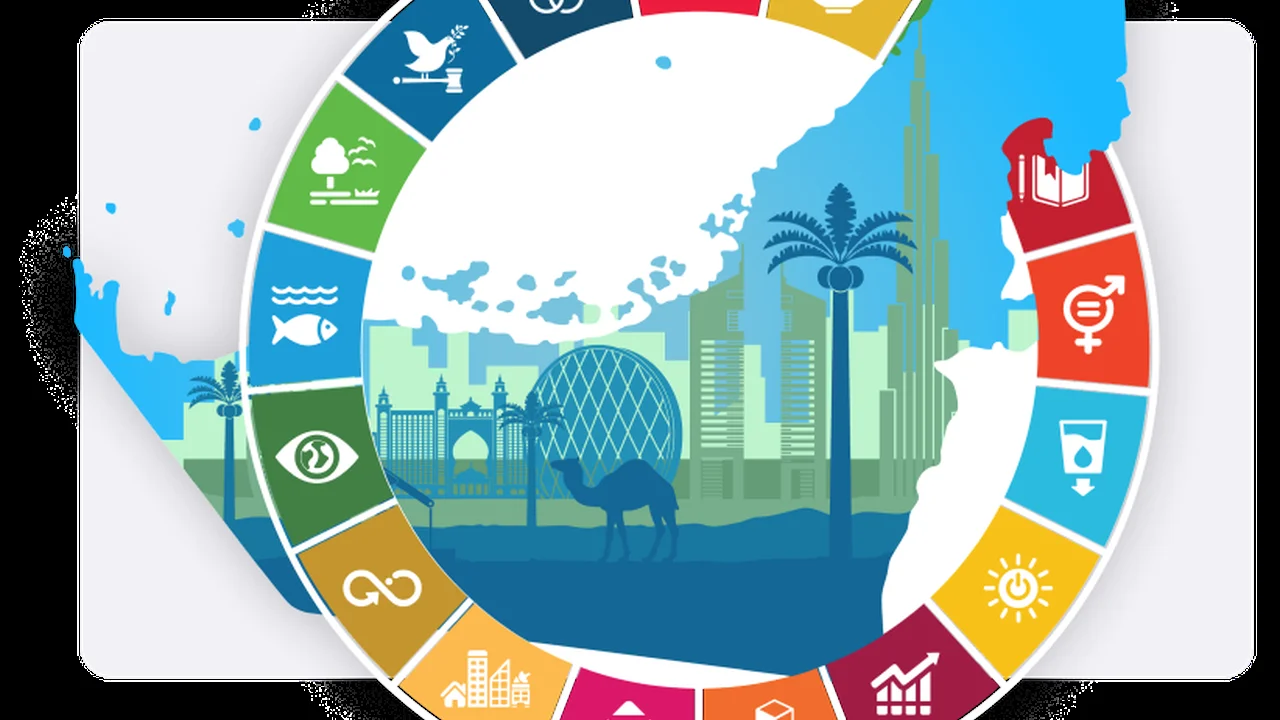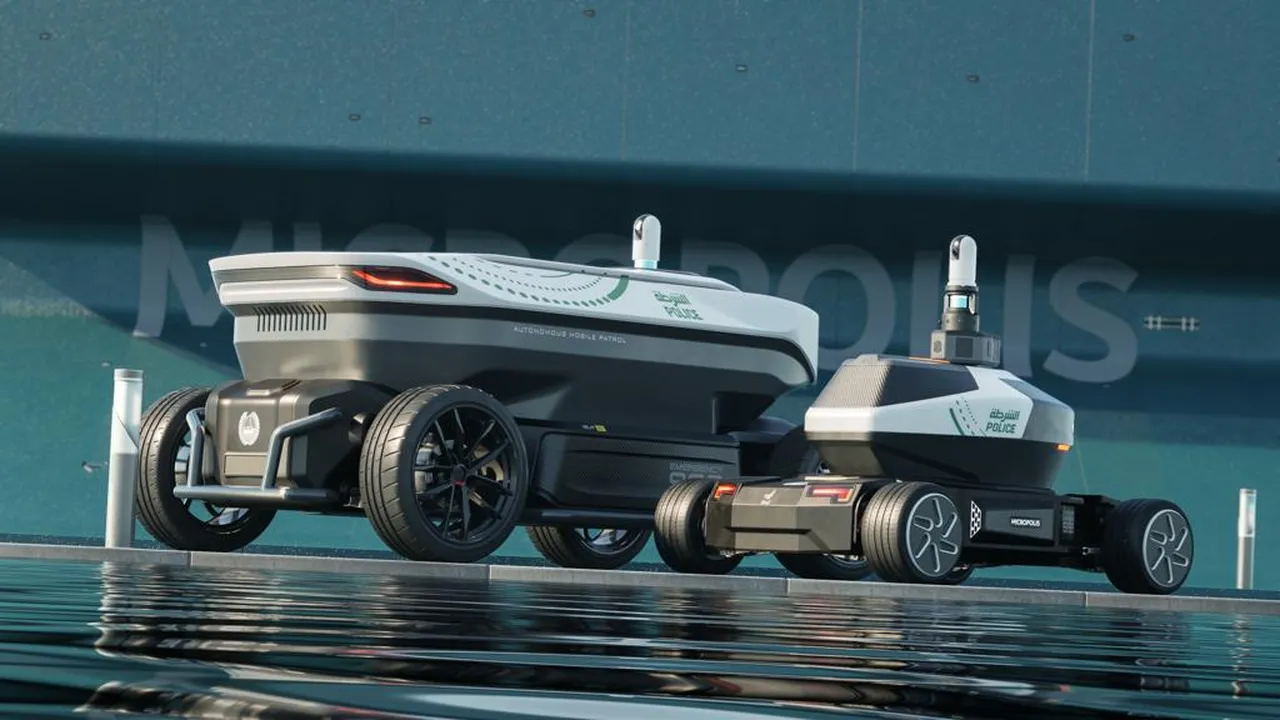5 Innovative Waste Management Solutions in Sharjah

Understanding Sustainability and Green Initiatives Global Perspectives
Sustainability isn't just a buzzword; it's a fundamental shift in how we interact with our planet. From the bustling streets of New York to the serene landscapes of Iceland, the call for sustainable practices resonates globally. But what does sustainability truly mean? At its core, it's about meeting the needs of the present without compromising the ability of future generations to meet their own needs. This encompasses environmental protection, social equity, and economic viability.
Green initiatives are the practical steps we take to achieve sustainability. These initiatives can range from individual actions like recycling and reducing energy consumption to large-scale projects like renewable energy development and sustainable urban planning. The common thread is a commitment to minimizing our environmental impact and creating a more resilient future.
Why is this important? Consider the alarming rate of deforestation, the increasing frequency of extreme weather events, and the growing scarcity of clean water. These are not isolated incidents; they are symptoms of a system that is out of balance. Sustainability and green initiatives offer a pathway to restore that balance, ensuring a healthier planet and a more equitable society for all.
Exploring Renewable Energy Solutions Powering a Sustainable Future
Renewable energy is a cornerstone of sustainability. Unlike fossil fuels, which are finite and contribute to greenhouse gas emissions, renewable energy sources are naturally replenished and have a minimal environmental footprint. Let's explore some of the most promising renewable energy solutions:
Solar Power Harnessing the Sun's Energy
Solar power utilizes photovoltaic (PV) cells to convert sunlight directly into electricity. It's a clean, reliable, and increasingly affordable energy source. Solar panels can be installed on rooftops, integrated into building materials, or deployed in large-scale solar farms.
Product Recommendation: Consider the SunPower A-Series solar panels for their high efficiency and durability. They are a premium option but offer excellent long-term value.
Use Case: A homeowner in California installs solar panels on their roof, significantly reducing their electricity bills and their reliance on fossil fuels. They also receive tax credits and rebates from the state government, making the investment even more attractive.
Product Comparison:
| Panel Type | Efficiency | Cost | Pros | Cons |
|---|---|---|---|---|
| SunPower A-Series | 22.8% | High | Highest efficiency, durable | Expensive |
| LG Neon 2 | 22% | Medium-High | High efficiency, good warranty | Slightly less efficient than SunPower |
| REC Alpha Series | 21.7% | Medium | Good efficiency, reasonable price | Less efficient than premium options |
Detailed Information: Solar panel pricing varies depending on the brand, efficiency, and installation costs. Expect to pay anywhere from $2.50 to $4.00 per watt installed. Government incentives and tax credits can significantly reduce the overall cost.
Wind Energy Capturing the Power of the Wind
Wind turbines convert the kinetic energy of the wind into electricity. Wind energy is a proven technology that is rapidly expanding worldwide. Wind farms can be located onshore or offshore, depending on wind resources and environmental considerations.
Product Recommendation: The Vestas V164-10.0 MW turbine is a powerful and reliable option for large-scale wind farms. It's designed for harsh offshore environments.
Use Case: A wind farm located off the coast of Denmark generates enough electricity to power hundreds of thousands of homes, reducing the country's dependence on fossil fuels and creating green jobs.
Product Comparison:
| Turbine Model | Capacity | Rotor Diameter | Pros | Cons |
|---|---|---|---|---|
| Vestas V164-10.0 MW | 10 MW | 164 meters | High capacity, proven technology | High initial cost |
| Siemens Gamesa SG 14-222 DD | 14 MW | 222 meters | Very high capacity, advanced technology | Relatively new technology |
| GE Haliade-X 12 MW | 12 MW | 220 meters | High capacity, established manufacturer | Requires significant infrastructure |
Detailed Information: Wind turbine pricing depends on the size, capacity, and location. A single large-scale wind turbine can cost millions of dollars. The levelized cost of energy (LCOE) for wind power is becoming increasingly competitive with fossil fuels.
Hydropower Harnessing the Power of Water
Hydropower utilizes the energy of moving water to generate electricity. Hydropower dams are a common sight in many parts of the world, but there are also smaller-scale run-of-river hydropower projects that have a lower environmental impact.
Product Recommendation: For smaller-scale applications, consider the Canyon Hydro Pelton turbine. It's efficient and reliable for small hydropower projects.
Use Case: A small community in the Himalayas uses a run-of-river hydropower project to provide electricity to local homes and businesses, improving their quality of life and reducing their reliance on diesel generators.
Product Comparison:
| Turbine Type | Head | Flow Rate | Pros | Cons |
|---|---|---|---|---|
| Pelton | High | Low | High efficiency, good for high head | Not suitable for low head |
| Francis | Medium | Medium | Versatile, good for medium head | Less efficient than Pelton at high head |
| Kaplan | Low | High | Good for low head, high flow | Less efficient at high head |
Detailed Information: Hydropower project costs vary widely depending on the size, location, and environmental impact. Smaller run-of-river projects can be more affordable than large dams but still require careful planning and environmental assessments.
Geothermal Energy Tapping into the Earth's Heat
Geothermal energy harnesses the heat from the Earth's interior to generate electricity or provide direct heating. Geothermal power plants can be located in areas with high geothermal activity, such as Iceland and New Zealand.
Product Recommendation: Ormat Technologies offers comprehensive geothermal power plant solutions, including turbines, generators, and control systems.
Use Case: Iceland relies heavily on geothermal energy for both electricity generation and heating, making it a leader in sustainable energy.
Product Comparison:
| Geothermal System Type | Application | Temperature | Pros | Cons |
|---|---|---|---|---|
| Dry Steam | Electricity Generation | High | High efficiency, reliable | Limited availability |
| Flash Steam | Electricity Generation | Medium | More common than dry steam | Lower efficiency than dry steam |
| Binary Cycle | Electricity Generation | Low-Medium | Can use lower temperature resources | Lower efficiency than other types |
Detailed Information: Geothermal power plant costs are relatively high due to the drilling and infrastructure requirements. However, geothermal energy provides a stable and reliable baseload power source.
Biomass Energy Utilizing Organic Matter
Biomass energy utilizes organic matter, such as wood, crops, and waste, to generate electricity or heat. Biomass can be a sustainable energy source if managed properly, ensuring that it is replenished at the same rate as it is consumed.
Product Recommendation: Drax Group operates a large-scale biomass power plant in the UK, utilizing sustainably sourced wood pellets to generate electricity.
Use Case: A community in Sweden uses wood chips from sustainably managed forests to heat homes and businesses, reducing their reliance on fossil fuels and supporting local forestry.
Product Comparison:
| Biomass Source | Application | Pros | Cons |
|---|---|---|---|
| Wood Pellets | Heating, Electricity Generation | Renewable, readily available | Can contribute to deforestation if not managed sustainably |
| Agricultural Residue | Electricity Generation | Utilizes waste products | Seasonal availability |
| Energy Crops | Electricity Generation, Biofuels | Can be grown specifically for energy | Requires land and resources |
Detailed Information: Biomass energy costs vary depending on the source and technology used. Sustainable sourcing and efficient combustion technologies are crucial for minimizing the environmental impact of biomass energy.
Embracing Sustainable Transportation Reducing Carbon Footprint
Transportation is a major contributor to greenhouse gas emissions. Transitioning to sustainable transportation options is essential for reducing our carbon footprint and creating cleaner, healthier cities.
Electric Vehicles The Future of Mobility
Electric vehicles (EVs) are powered by electricity instead of gasoline, producing zero tailpipe emissions. EVs are becoming increasingly affordable and offer a compelling alternative to traditional gasoline-powered cars.
Product Recommendation: The Tesla Model 3 is a popular and well-regarded EV, offering a good balance of performance, range, and price.
Use Case: A commuter in Los Angeles switches from a gasoline-powered car to an EV, reducing their emissions and saving money on fuel and maintenance.
Product Comparison:
| EV Model | Range | Price | Pros | Cons |
|---|---|---|---|---|
| Tesla Model 3 | 272-353 miles | $40,240 | Good range, performance, charging network | Can be expensive |
| Chevrolet Bolt EV | 259 miles | $25,600 | Affordable, good range | Less luxurious than Tesla |
| Nissan Leaf | 149-226 miles | $27,400 | Affordable, reliable | Shorter range than other options |
Detailed Information: EV prices vary depending on the model and features. Government incentives and tax credits can significantly reduce the purchase price. Charging infrastructure is expanding rapidly, making it easier to own and operate an EV.
Public Transportation Efficient and Sustainable
Public transportation, such as buses, trains, and subways, is a more efficient and sustainable way to move large numbers of people compared to individual cars. Investing in and improving public transportation systems is crucial for reducing traffic congestion and emissions.
Product Recommendation: Siemens Mobility offers a wide range of public transportation solutions, including trains, trams, and signaling systems.
Use Case: A city invests in a modern subway system, reducing traffic congestion and improving air quality. More people are able to commute to work quickly and efficiently, boosting the local economy.
Product Comparison:
| Public Transportation System | Capacity | Cost | Pros | Cons |
|---|---|---|---|---|
| Subway | High | Very High | High capacity, fast | Expensive to build |
| Light Rail | Medium | High | Flexible, can be integrated into existing infrastructure | Lower capacity than subway |
| Bus Rapid Transit | Medium | Medium | Cost-effective, flexible | Can be affected by traffic congestion |
Detailed Information: Public transportation infrastructure costs vary widely depending on the type of system and the location. Government funding and public-private partnerships are often used to finance these projects.
Cycling and Walking Active and Eco-Friendly
Cycling and walking are the most sustainable forms of transportation. They are healthy, affordable, and produce zero emissions. Creating safe and accessible infrastructure for cycling and walking is essential for promoting these modes of transportation.
Product Recommendation: Trek Bicycles offers a wide range of bikes for commuting, recreation, and fitness.
Use Case: A city invests in bike lanes and pedestrian walkways, making it safer and more convenient for people to cycle and walk. More people choose to cycle and walk instead of driving, reducing traffic congestion and improving air quality.
Product Comparison:
| Bike Type | Use | Price | Pros | Cons |
|---|---|---|---|---|
| Hybrid Bike | Commuting, Recreation | $400-$1000 | Versatile, comfortable | Not as fast as road bikes |
| Road Bike | Fitness, Racing | $800-$5000 | Fast, efficient | Less comfortable for long distances |
| Mountain Bike | Off-Road Riding | $500-$10000 | Durable, good for rough terrain | Less efficient on pavement |
Detailed Information: Bicycle prices vary depending on the type and features. Investing in a good quality bike and safety gear is essential for a comfortable and safe cycling experience.
Implementing Sustainable Agriculture Practices Protecting Our Food Supply
Agriculture is essential for feeding the world, but it can also have a significant environmental impact. Sustainable agriculture practices aim to minimize this impact and ensure that our food supply is secure for future generations.
Organic Farming Natural and Sustainable
Organic farming avoids the use of synthetic pesticides, fertilizers, and genetically modified organisms (GMOs). Organic farmers rely on natural methods to control pests and weeds, build soil fertility, and promote biodiversity.
Product Recommendation: Seed Savers Exchange offers a wide variety of organic and heirloom seeds.
Use Case: A farmer converts their farm to organic production, improving soil health, reducing their reliance on synthetic inputs, and selling their produce at a premium price.
Product Comparison:
| Farming Method | Pesticide Use | Fertilizer Use | Pros | Cons |
|---|---|---|---|---|
| Organic | None (Synthetic) | Natural | Improved soil health, biodiversity | Lower yields, higher labor costs |
| Conventional | Synthetic | Synthetic | Higher yields, lower labor costs | Negative environmental impact |
Detailed Information: Organic farming practices require more labor and management skills than conventional farming. However, organic produce can command a higher price in the market, offsetting the higher production costs.
Crop Rotation Improving Soil Health
Crop rotation involves planting different crops in a sequence to improve soil health, reduce pest and disease problems, and increase yields. Crop rotation can also help to reduce the need for synthetic fertilizers.
Product Recommendation: Cover crops, such as clover and rye, can be used in crop rotation systems to improve soil health and suppress weeds.
Use Case: A farmer implements a crop rotation system on their farm, rotating corn, soybeans, and wheat. This improves soil health, reduces pest and disease problems, and increases yields.
Product Comparison:
| Crop Rotation Benefit | Description | Example |
|---|---|---|
| Improved Soil Health | Increases organic matter, improves soil structure | Planting a cover crop after harvesting a cash crop |
| Reduced Pest and Disease Problems | Breaks pest and disease cycles | Rotating crops from different plant families |
| Increased Yields | Improves nutrient availability | Rotating legumes with non-legumes |
Detailed Information: Crop rotation systems need to be carefully planned to ensure that they are effective. Farmers need to consider the specific needs of their soil and the crops they are growing.
Water Conservation Efficient Irrigation Techniques
Water is a precious resource, and it is important to use it efficiently in agriculture. Efficient irrigation techniques, such as drip irrigation and micro-sprinklers, can help to reduce water waste and improve crop yields.
Product Recommendation: Netafim offers a wide range of drip irrigation systems and micro-sprinklers.
Use Case: A farmer installs a drip irrigation system on their farm, reducing water waste and improving crop yields. They also save money on water bills.
Product Comparison:
| Irrigation Method | Water Use Efficiency | Cost | Pros | Cons |
|---|---|---|---|---|
| Drip Irrigation | High | Medium | Efficient, reduces water waste | Can be expensive to install |
| Micro-Sprinklers | Medium | Low | More affordable than drip irrigation | Less efficient than drip irrigation |
| Flood Irrigation | Low | Very Low | Least expensive | Most water waste |
Detailed Information: Efficient irrigation systems need to be properly designed and maintained to ensure that they are effective. Farmers need to consider the specific needs of their crops and the climate in their region.
Promoting Sustainable Consumption Reducing Waste and Conserving Resources
Our consumption patterns have a significant impact on the environment. Promoting sustainable consumption involves reducing waste, conserving resources, and making more responsible purchasing decisions.
Reducing Waste Minimizing Our Environmental Impact
Reducing waste is essential for minimizing our environmental impact. This involves reducing the amount of waste we generate, reusing items whenever possible, and recycling materials that cannot be reused.
Product Recommendation: Reusable shopping bags, water bottles, and food containers can help to reduce waste.
Use Case: A family reduces their waste by using reusable shopping bags, water bottles, and food containers. They also compost food scraps and recycle materials that cannot be reused.
Product Comparison:
| Waste Reduction Strategy | Description | Example |
|---|---|---|
| Reduce | Minimize the amount of waste generated | Buying products with less packaging |
| Reuse | Use items more than once | Using reusable shopping bags |
| Recycle | Convert waste into new products | Recycling paper, plastic, and metal |
Detailed Information: Reducing waste requires a conscious effort to change our consumption habits. However, it can save money and reduce our environmental impact.
Conserving Resources Using Resources Wisely
Conserving resources involves using resources wisely and avoiding waste. This includes conserving water, energy, and other natural resources.
Product Recommendation: Energy-efficient appliances, water-saving fixtures, and sustainable building materials can help to conserve resources.
Use Case: A homeowner installs energy-efficient appliances, water-saving fixtures, and sustainable building materials in their home. This reduces their energy and water consumption and saves them money on utility bills.
Product Comparison:
| Resource Conservation Strategy | Description | Example |
|---|---|---|
| Water Conservation | Using water efficiently | Installing low-flow showerheads |
| Energy Conservation | Using energy efficiently | Installing energy-efficient appliances |
| Material Conservation | Using materials wisely | Using sustainable building materials |
Detailed Information: Conserving resources requires a conscious effort to change our consumption habits. However, it can save money and reduce our environmental impact.
Sustainable Purchasing Making Responsible Choices
Sustainable purchasing involves making responsible choices when buying products and services. This includes considering the environmental and social impact of the products we buy, choosing products that are durable and long-lasting, and supporting companies that are committed to sustainability.
Product Recommendation: Look for products that are certified by reputable sustainability organizations, such as the Fair Trade Certified or the Forest Stewardship Council (FSC).
Use Case: A consumer chooses to buy products that are Fair Trade Certified, supporting farmers and workers in developing countries. They also choose products that are durable and long-lasting, reducing the need to replace them frequently.
Product Comparison:
| Sustainable Purchasing Criteria | Description | Example |
|---|---|---|
| Environmental Impact | Minimize environmental impact | Choosing products made from recycled materials |
| Social Impact | Support fair labor practices | Choosing products that are Fair Trade Certified |
| Durability | Choose products that are long-lasting | Choosing products that are well-made and durable |
Detailed Information: Sustainable purchasing requires a conscious effort to research the products we buy and make informed choices. However, it can support sustainable businesses and reduce our environmental and social impact.
The Role of Government and Policy Driving Sustainable Change
Government plays a crucial role in driving sustainable change through policies and regulations that promote environmental protection and resource conservation.
Environmental Regulations Setting Standards for Sustainability
Environmental regulations set standards for air and water quality, waste management, and other environmental issues. These regulations help to protect the environment and human health.
Product Recommendation: Companies need to comply with environmental regulations to avoid fines and penalties.
Use Case: A government implements stricter environmental regulations on air pollution, reducing air pollution levels and improving public health.
Product Comparison:
| Environmental Regulation Type | Description | Example |
|---|---|---|
| Air Quality Regulations | Set standards for air pollutants | Clean Air Act |
| Water Quality Regulations | Set standards for water pollutants | Clean Water Act |
| Waste Management Regulations | Regulate the management of waste | Resource Conservation and Recovery Act |
Detailed Information: Environmental regulations are constantly evolving to address new environmental challenges. Companies need to stay up-to-date on the latest regulations to ensure compliance.
Incentives and Subsidies Promoting Sustainable Practices
Incentives and subsidies can be used to promote sustainable practices, such as renewable energy development and energy efficiency improvements. These incentives can help to make sustainable practices more affordable and attractive.
Product Recommendation: Government incentives and subsidies can help to reduce the cost of sustainable technologies.
Use Case: A government offers tax credits for homeowners who install solar panels, encouraging more people to adopt renewable energy.
Product Comparison:
| Incentive Type | Description | Example |
|---|---|---|
| Tax Credits | Reduce the amount of taxes owed | Tax credits for solar panel installation |
| Subsidies | Provide financial assistance | Subsidies for renewable energy projects |
Detailed Information: Government incentives and subsidies can be a powerful tool for promoting sustainable practices. However, they need to be carefully designed to ensure that they are effective and efficient.
International Agreements Addressing Global Challenges
International agreements are essential for addressing global challenges, such as climate change and biodiversity loss. These agreements require countries to cooperate and commit to specific actions.
Product Recommendation: International agreements require countries to work together to address global challenges.
Use Case: The Paris Agreement is an international agreement that aims to limit global warming to well below 2 degrees Celsius above pre-industrial levels.
Product Comparison:
| International Agreement | Goal | Key Provisions |
|---|---|---|
| Paris Agreement | Limit global warming | Reduce greenhouse gas emissions |
| Kyoto Protocol | Reduce greenhouse gas emissions | Set binding emission reduction targets |
Detailed Information: International agreements are complex and require ongoing negotiation and cooperation. However, they are essential for addressing global challenges.
Education and Awareness Empowering Individuals to Make a Difference
Education and awareness are essential for empowering individuals to make a difference in sustainability. By understanding the challenges and opportunities, people can make more informed choices and take action to protect the environment.
Environmental Education Teaching Sustainability Concepts
Environmental education teaches sustainability concepts to students of all ages. This includes understanding the environment, the impact of human activities, and the solutions that can be used to protect the environment.
Product Recommendation: Environmental education resources are available from a variety of organizations.
Use Case: A school implements an environmental education program, teaching students about sustainability and encouraging them to take action.
Product Comparison:
| Environmental Education Program | Target Audience | Key Topics |
|---|---|---|
| Project Learning Tree | K-12 Students | Forests, Sustainability |
| National Geographic Education | K-12 Students, Adults | Geography, Environment |
Detailed Information: Environmental education is essential for creating a more sustainable future. It empowers individuals to make informed choices and take action to protect the environment.
Public Awareness Campaigns Raising Awareness of Sustainability Issues
Public awareness campaigns raise awareness of sustainability issues and encourage people to take action. These campaigns can use a variety of media, such as television, radio, and social media.
Product Recommendation: Public awareness campaigns can be effective in raising awareness of sustainability issues.
Use Case: A government launches a public awareness campaign to encourage people to recycle, reducing waste and conserving resources.
Product Comparison:
| Public Awareness Campaign | Target Audience | Key Message |
|---|---|---|
| Recycle Right | General Public | Recycle correctly to reduce waste |
| Energy Star | General Public | Use energy-efficient appliances to save energy |
Detailed Information: Public awareness campaigns can be effective in changing behavior and promoting sustainability. However, they need to be carefully designed and targeted to the right audience.
Community Engagement Involving People in Sustainability Initiatives
Community engagement involves involving people in sustainability initiatives. This can include volunteering, participating in community events, and supporting local businesses that are committed to sustainability.
Product Recommendation: Community engagement can be a powerful tool for promoting sustainability.
Use Case: A community organizes a cleanup event, removing litter and improving the local environment.
Product Comparison:
| Community Engagement Activity | Description | Benefits |
|---|---|---|
| Community Cleanup | Remove litter and improve the environment | Improved environment, increased community pride |
| Community Garden | Grow food and build community | Improved access to healthy food, increased community cohesion |
Detailed Information: Community engagement is essential for creating a more sustainable future. It empowers individuals to take action and build a more resilient community.
:max_bytes(150000):strip_icc()/277019-baked-pork-chops-with-cream-of-mushroom-soup-DDMFS-beauty-4x3-BG-7505-5762b731cf30447d9cbbbbbf387beafa.jpg)






